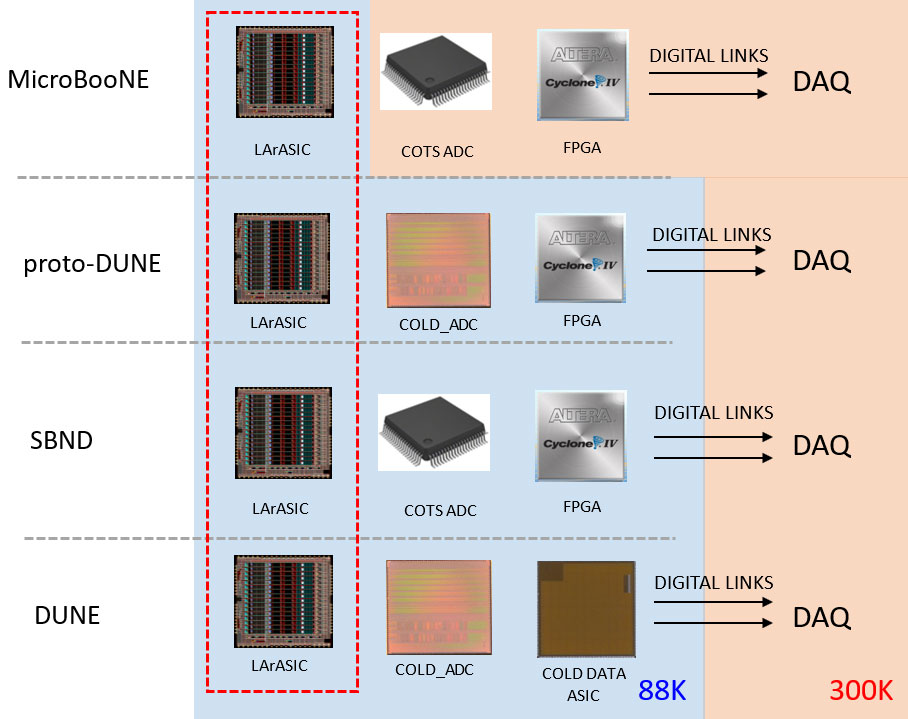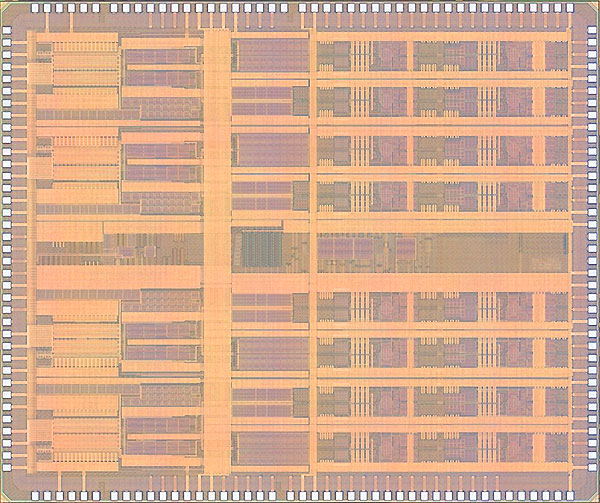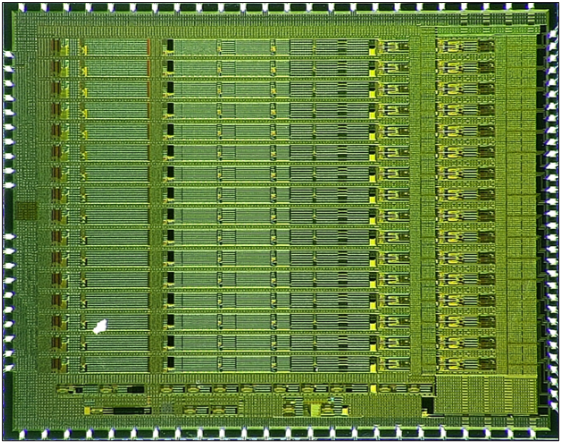Integrated Electronics
ASICs
Application-specific integrated circuits (ASICs) are the enabling technology for many complex detector systems. For decades, we have been developing low‐noise, low-power, and mixed-signal ASICs for particle detectors, high-resolution x-ray and gamma-ray spectrometers, and high-rate photon counters and imagers. A particular focus of our group is microelectronics for extreme environments, including radiation and cryogenics. Our ASICs are enabling experiments critical to the U.S. Department of Energy mission (science, energy, and security); other U.S. government agencies such as the National Aeronautics and Space Administration; and international user facilities, including CERN. They are also licensed and available to commercial partners.
Our Capabilities
- Design of low-noise and low-power front-end circuits customized for specific sensors and optimized for amplitude and time resolution, with data, event-driven, or zero-suppressed readouts
- Specialization of ASICs for cryogenic operation, with a focus on readouts for liquid-noble-element time projection chambers (TPCs) and long lifetime reliability
- Advancement and implementation of techniques for radiation-hardened microelectronics with immunity to total ionizing dose (TID), non-ionizing energy loss (NIEL), and single event effects (SEEs)
- Development of hybrid- and monolithic active-pixel detectors for photon science, nuclear and particle physics, bio-imaging, and national security applications
- Extension of functionalities of highly granular pixel detectors through advanced interconnects techniques: three-dimensional integrated circuits, high-density interconnects, and edgeless and gapless assembly
- Enablement of scalable quantum systems with integrated readout and control (radio frequency and cryogenic), starting from process-guided device modeling and including data converters, mixers, and clocking circuits
- Implementation of artificial intelligence, machine learning, and neuromorphic computing platforms with an emphasis on edge computing and in-hardware processing of unconventional architectures
- Generation and maintenance of libraries and models for handling designs for cryogenic and high-radiation environments
- Application of industry-standard electronic computer-aided design (ECAD) tools
- Collaboration with in-house printed-circuit assembly and high-density interconnect groups to optimize system designs
ASICs Operating at Cryogenic Temperatures
ASICs operating at the cryogenic temperatures of noble liquid elements (liquid argon and xenon) are needed for several cutting-edge physics experiments, including the ATLAS Liquid Argon Calorimeter, Deep Underground Neutrino Experiment (DUNE), and the next Enriched Xenon Observatory (nEXO). We are developing highly reliable front-end electronics operating under extreme conditions for these experiments, providing the highest possible resolution for both charge and timing measurements while dissipating very low power.
At right, evolution of liquid argon (LAr) readout chain for various neutrino experiments: MicroBooNE, protoDUNE, Short-Baseline Near Detector (SBND), and DUNE.







